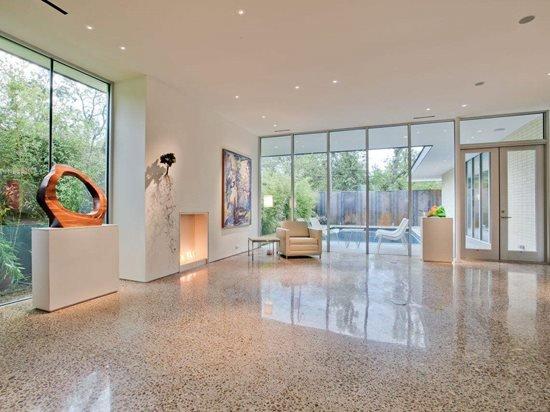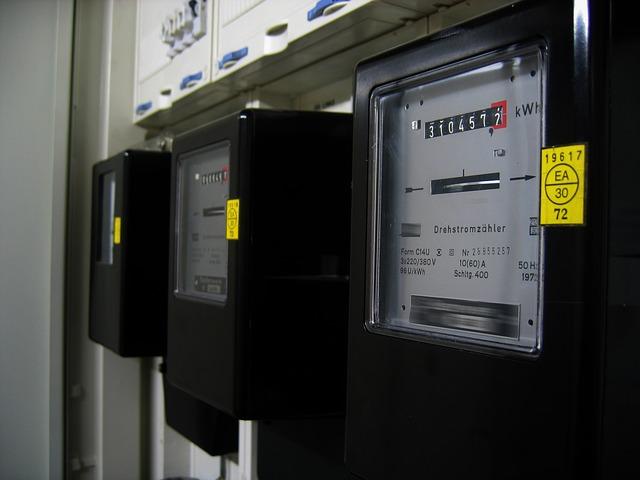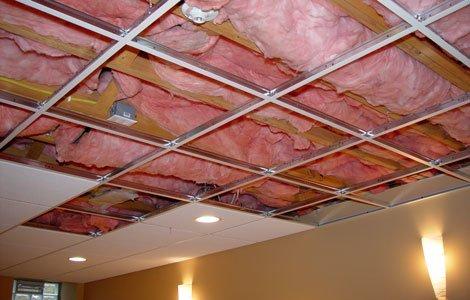
One of the most important decisions you will have to make while building or renovating your house is to choose a flooring option. There are different types of flooring to choose from, ranging from vinyl to brick and concrete.
Concrete, which is our major focus in this article, is a composite material made up of water and an aggregate (rock, sand, or gravel) mixed with cement to harden it over time.
This flooring option varies, depending on the materials used to produce them. For example, the major material used on a road surface is Bitumen, and the type of concrete is known as ‘Asphalt concrete’. Other common types of concrete are Hoover Dam, Panama Canal, and the Roman Pantheon.
Where to Use Concrete
Concrete is a good option for any type of construction or flooring work because it is very strong and extremely durable. It is the most basic flooring material and can be used as the basic floor surface of a structure, especially when durability and ease of maintenance coupled with design and aesthetics are important to you.
It can either be used for places like warehouses, factories, garages, lobbies, patios, basements, and public institutions. It can also be used as a base when you decide to install other types of flooring on it. The right type to choose depends on the purpose of the building to be floored.
Technology advancement has created a variety of design options that allows flooring professionals to reinvent this basic building material (concrete).
Today, concrete floors can be smoothly polished or textured, painted or stained by using several techniques that allow you to replicate the look of natural materials or embed the floor with intricate printed designs.
In this article, we shall be explaining everything you need to know about concrete polishing to enable you to make the most of it.
What is Concrete Polishing?
Concrete polishing is the act of treating concrete with a chemical dissolver and grinding it progressively into a finer texture with the use of grinding tools.
For concrete to be well-polished, it must attain a grit above 400 level. Hence, you can start polishing when it attains a grit of 500, 800, or 3000. Stain and dyes are also added to enhance the polishing.
Polished concretes are easy to install. They require minimum maintenance and are very cheap, making them a great choice for homeowners.
Concrete Polishing Tools
Concrete Polishing requires a great deal of professionalism and expertise. Therefore, you need the service of a professional to enable you to polish it successfully.
But if you know how to effectively use concrete grinders, you can conveniently polish concrete yourself as long as you have the following materials:
- Concrete grinder: you can get this from a flooring professional friend if you have one. Alternatively, you can rent one from your local home improvement center
- Grinding discs (get a variety of grits from 30 to 3000)
- Polishing pads
- Gloves
Methods of Polishing Concrete
Irrespective of the method you employ, you must first smoothen the floor using a professional grinding machine. This smoothing process involves ten stages with each stage requiring different coarseness of grinding to get to the level of smoothness and gloss you desire.
The coarseness range from 600 to 3000 grit surfaces, some of which incorporate diamonds.
The two major methods of polishing concretes are:
-
Dry Polish Method
Image credit: substratetechnology.com
Even though this method is said to be a dry method, water is added between stages to keep the dust down. The method helps to give a high gloss shine to your concrete floor.
The instruments required include a large corded electrical machine to polish the floor and small hand machines for harder-to-reach-areas.
-
Wet Polish Method
Image credit: jwspecialtyflooring.com
As the name implies, this method requires water at every stage of the concrete polishing process. As a result of this, the process is dust-free and prevents dust contamination of the area.
This method requires less downtime and is cheaper when compared with the dry polish method. It also creates a low-luster surface and can only be applied to large open areas.
Concrete Polishing Steps
1. Determine Surface Hardness Using MOHS Test Kit/ MOHS Concrete Hardness Tester
Test at least three areas of the floor to get the average test rating.
2. Concrete Surface Preparation
Repair any surface holes or cracks and determine the type of coating. If the floor is coated, remove with appropriate tools. Grind with 16, 30/40, 70/80 grit metal bond to achieve floor flatness.
3. Remove Metal Tool Marks
This helps to create a surface ready for polishing as it removes metal tooling scratches. Here, a 50, 100, or 200 grit transitional tooling is required.
4. Densify and Harden the Concrete
Use either ULTRAHard Lithium or ULTRADensifil to help solidify the surface and to provide extra protection from water penetration and staining.
5. Concrete Polishing
You can start with an appropriate resin bond tool — 200, 400, 800, 1500, and 3000 grit (optional). Ensure that dust is removed in-between passes. After your final grit level, burnish the floor with 3000 grit.
6. Seal and Protect Polished Concrete
Once you get your final look, protect its surface by applying a commercial stain-guard product like WerkMaster ULTRAguard sealer and surface wear protector. This is very important if the surface is to be exposed to grease, oil, or chemicals.
Polished Concrete Floors Pros
-
Anti-Dust

Image credit: artscapes.ng
When concrete is the basic floor surface of a structure, tiny dust particles are pushed to the surface via an upward force known as hydrostatic force. This eventually results in efflorescence.
Concrete polishing is, however, anti-dust. This makes it an excellent choice for asthmatic patients and people who cannot stand the sight of dust.
-
Cost-Effective
This flooring option eliminates the labor, time, and expenses required in other flooring options where wax or chemicals are used for cleaning. Other flooring options require stripping, waxing, and refinishing. However, all you need to maintain a concrete floor is warm soapy water to clean up every morning or once a week with a neutral-based cleaner.
-
Anti-Slip
Due to its coefficient of friction, concrete polishing is 40% less slippery than a hardwood floor, ordinary concrete, waxed linoleum, or polished marble. Therefore, it's very good for residential purposes regardless of its shiny surface.
It can be used in different parts of the home where getting water on the floor is easy. For example, the bathroom, kitchen, and toilet.
Also, it is an excellent option if you have kids. Rest assured that your kids won't easily experience a slip as they run or play around in the house.
-
Reduction in Lighting Cost

Image credit: concretenetwork.com
Concrete flooring reduces the amount you spend on lighting because it has a high light reflectivity that helps to promote natural lighting while keeping your floor and home beautiful and bright.
-
Immune to Moisture Damage and Mold
It’s a great choice for families with allergy vulnerability or asthmatics. This is because it is immune to moisture damage and doesn’t support the growth of mold and bacteria. It is also a good choice for parents who want to protect their kids from being susceptible to bacteria.
-
Longer Lifespan
Due to its hardness, polished concrete cannot easily chip off. Hence, it can be used for a very long period. The life expectancy of this flooring option surpasses those of its counterparts.
It has a lifespan of about 100 years, unlike other types of flooring whose life span can be between 10 and 20 years. This makes it a permanent flooring option. It can, however, be renovated from time to time if the homeowner desires another style or design.
-
Affordable
The cost of concrete polishing is almost less than the cost of purchasing the materials for a tile or hardwood flooring installation. Therefore, concrete polishing is cheaper than other flooring options like hardwood, tile, marble, and stone.
So, you will be getting a very beautiful floor at an affordable price.
-
Design/Aesthetics

Image credit: concretenetwork.com
The stains and dyes available for polished concrete floors are limitless. They come in a variety of colors and aggregates you can choose from to incorporate into your flooring for aesthetics.
Polished concrete can be stained, penciled, or engraved to add character and further improve its appearance. Therefore, choose polished concrete floors if you want to go for a chic, affordable, and long-lasting flooring option.
-
Eco-Friendly
Concrete polishing is eco-friendly because fewer toxic chemicals are used during its installation process. This makes it give room for better indoor air quality. Also, there is a production of reduced construction waste and energy during installation. So, it is safe for you, your employees, customers, and children.
-
Modernity
If you want your house to catch up with modern standards, or intend to offer your clients and guests a beautiful and welcoming environment, concrete polishing is a very good option for you. It is versatile and can fit into modern-day standards without requiring you to spend a fortune.
Polished Concrete Floors Cons
-
Discoloration
There are tendencies for it to change its color if it's not properly maintained.
-
Stains
Deep-rooted stains might be made when the concrete slab is initially poured. It can occur when the concrete is being prepared and not after a concrete floor has been polished and sealed. Hence, the flooring professional should be very careful and observant to avoid this.
Final Words
When selecting a flooring option, you might get a bit confused because there are numerous options to choose from. If you want a beautiful and long-lasting flooring option that provides ease of maintenance, durability, and modernity, then you should consider concrete polishing.







1 comment
Ms. My
Agree 100%! This article covers all the basics you need to know about concrete polishing. https://www.abqconcretecontractor.com/
Leave a comment
This site is protected by hCaptcha and the hCaptcha Privacy Policy and Terms of Service apply.